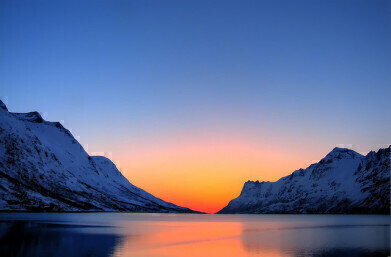Fuel for Thought
Who Can Lay Claim to Arctic Oil?
Nov 26 2015
Remote, isolated and unforgiving, the Arctic failed to make the radars of oil hungry countries for decades. The region was essentially considered a frozen wasteland, where harsh conditions made it near impossible to search for fossil fuels. When the Freedom of the Seas doctrine was established in the 17th century participating nations happily agreed that then Arctic belonged to no one. While adventurers and explorers continued to reconnoitre its bleak yet beautiful landscape, it never gained the attention of international politics, let alone oil expedition projects. However as of late, the Arctic has begun to steal the concerns of oil giants in search of lucrative prospects.
An oil rich region
Given the fact that a recent U.S. Geological Survey estimated that a huge 13% of the world's undiscovered oil and 30% of its undiscovered natural gas lie beneath the ocean floor of the Arctic, the region is in huge demand. Over 90 billion barrels of oil are up for grabs, and you can bet that countries won’t be shy is claiming their stake. This has led to extreme controversy, with environmentalists asserting that Arctic oil isn’t up for grabs. Despite the fact that the United Nations Convention on the Law of the Sea (UNCLOS) addresses key navigation rights and eco concerns, corporations such as Shell still insist on fossil fuel expeditions in the region.
Is this illegal or is it perfectly within its rights? Read on as we explore who commands Arctic resources, and why countries such as Canada, Denmark, Norway, Russia and the United States are vying for their slice of the pie.
Staking a claim
When the UNCLOS treaty was first introduced coastal countries were able to claim waters up to 200 nautical miles off their official shorelines. Unsurprisingly, this led to a hectic stampede to officially take ownership of Arctic territory. Today, countries are still employing advanced surveying efforts and scientific techniques to win as much oceanic terrain as possible.
Power tactics have also been employed, with Russia creating waves back in 2007 when it hoisted up its flag on the seafloor of the North Pole. It’s also revealed plans to deploy paratroopers in the region, as well as identifying it as a potential area of military conflict.
So who officially owns the Arctic's oil? Legitimately, the answer is any country with coastline that borders the region. This includes Canada, Denmark, Norway, Russia and the United States.
Could thermowells soon be a common fixture across the Arctic? Chris Chant, of Okazaki Manufacturing Company (OMC) discusses the basic principles of the tubular fittings in ‘A Guide to the Selection and Application of Thermowells.’
Image via Flickr Creative Commons. Credits: P J Hansen
Digital Edition
PIN 25.1 Feb/March
March 2024
In This Edition Safety - The technology behind the ION Science Tiger XT - Safety with ammonia and LOHCs as hydrogen carriers Analytical Instrumentation - Discussion on new tribology te...
View all digital editions
Events
Apr 28 2024 Montreal, Quebec, Canada
Apr 30 2024 Birmingham, UK
May 03 2024 Seoul, South Korea
May 05 2024 Seville, Spain
May 06 2024 Riyadh, Saudi Arabia


















